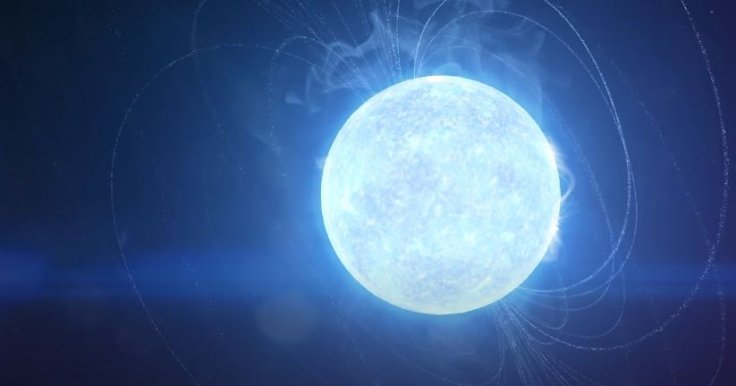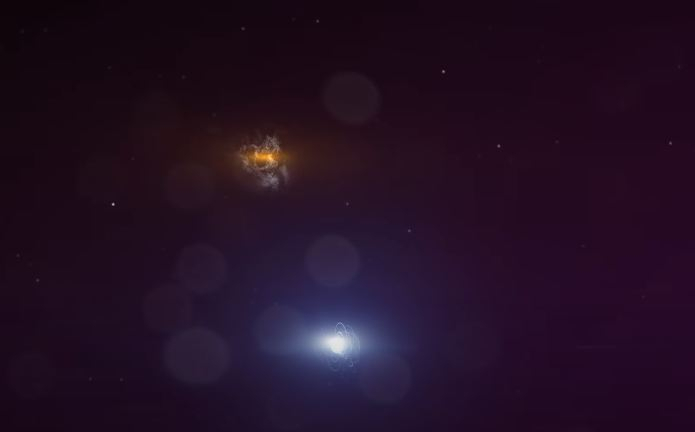The mysteries of the universe are as plenty as its expanse. Mankind has only scratched if not pricked its surface. However, scientists managed to solve one such cosmic mystery this year by successfully tracing the origins of a synchronized mixture of radio signals and X-rays known as fast radio burst (FRB); the first to be recorded in the Milky way.
In four studies published in the journal Nature, researchers illustrated the detection of an FRB in April this year, and how it was traced to a magnetar—super-magnetized remains of a star. So far, FRB's have been observed emanating only from magnetars in other galaxies.
"Before this event, a wide variety of scenarios could explain the origin of FRBs. While there may still be exciting twists in the story of FRBs in the future, for me, right now, I think it's fair to say that most FRBs come from magnetars until proven otherwise," said Chris Bochenek, lead author of one of the studies.
Cosmic Powerhouse of Energy

Scientists have been aware of the existence of FRBs for over a decade and have observed them being emitted from galaxies outside our own. Tracing their origins, however, has served as a challenge due to distance and the fleeting nature of the signals that last only for a few milliseconds.
Magnetars, from whom the signals arise, are a type of dense isolated neutron stars formed from the remains of an exploded star. They are the size of a large city but have a mass that is 1.5 times that of our own sun. Magnetars have massive magnetic fields that sizzle with energy, and occasionally have outbursts of X-rays and radio waves.
The radiations of the FRB identified in the study were detected by separate space observatories. Several satellites, including NASA's wind mission, identified the X-ray component. While the radio portion of the simultaneous outburst was by the Canadian Hydrogen Intensity Mapping Experiment (CHIME), and Survey for Transient Astronomical Radio Emission 2 (STARE2), a NASA-funded project.
Detecting the Momentous Outburst
On April 27, NASA's Neil Gehrels Swift Observatory observed activity from a magnetar called SGR 1935+2154 (SGR 1935 for short) that is 14,000 to 41,000 light-years away and is located in the Vulpecula constellation. A storm of lightning-fast bursts of X-ray, with each lasting less than a second, raged on for two hours. They were picked telescopes such as NASA's Fermi Gamma-ray Space Telescope and Neutron star Interior Composition Explorer (NICER).

After the storm subsided 13 hours later, and SGR 1935 was out of Fermi and NICER's view, one momentous X-ray burst was observed by few satellites, including NASA's Wind. CHIME and STARE2 detected the radio burst that lasted only for a thousandth of a second.
"The radio burst was far brighter than anything we had seen before, so we immediately knew it was an exciting event. We've studied magnetars in our galaxy for decades, while FRBs are an extragalactic phenomenon whose origins have been a mystery. This event shows that the two phenomena are likely connected," said Paul Scholz, member of the CHIME team
Not A Danger to Earth
The sheer intensity of the magnetic fields around magnetars is of destructive proportions. Atoms in the vicinity of the fields are ripped apart, giving rise to fascinating demonstrations of fundamental physics. According to some scientists, such as Shami Chatterjee of Cornell University (who was not involved in the study), who told AP News that there are only around a dozen magnetars in the Milky Way. This is probably due to their young age and role in the star birth process, and our galaxy does not teem with the birth of stars, unlike others.

Also, the energy that the less-than-a second burst packed was comparable to that produced by our sun in a month, according to Bochenek. He pointed out that this energy was far weaker than the radio bursts detected outside our galaxy. Therefore, the question of whether this FRB being harmful to us is a valid one.
Scientists assure that the detected radio burst or even the supremely powerful ones arising from galaxies outside ours are not dangerous to us. According to Daniele Michilli, co-author of one of the studies, burst from other galaxies that travel millions or billions of light-years is "tens of thousands to millions of times more powerful than anything we have detected in our galaxy." Therefore, it is safe to say that Earth is "Ok".
Unlocking the Mysteries of the Universe

Astronomers believe that the nature and composition of the FRBs can help us understand the universe better. As they are influenced by the materials they pass through as they travel across space, it might be possible to use FRBs to map the material between galaxies that is invisible two us and " weigh" the universe, Jason Hessels, of the Netherlands Institute for Radio Astronomy, who was not involved in the studies, told AP News.
While several theories have been formulated for the causes of fast radio bursts, with sone outlandish ones suggesting the involvement of aliens, scientists highlight that magnetars may not provide the complete answer. This is because there are two kinds of FRBs—like the one detected in April and occur only once, and the other that is repetitive.
Therefore, for definitive evidence of the magnetar link, researchers would have to spot an FRB outside the Milky way that where X-ray bursts coincide with radio waves from the same source. This is possible only from nearby galaxies and astronomers and their sophisticated space toys must continue to peer into the skies.









